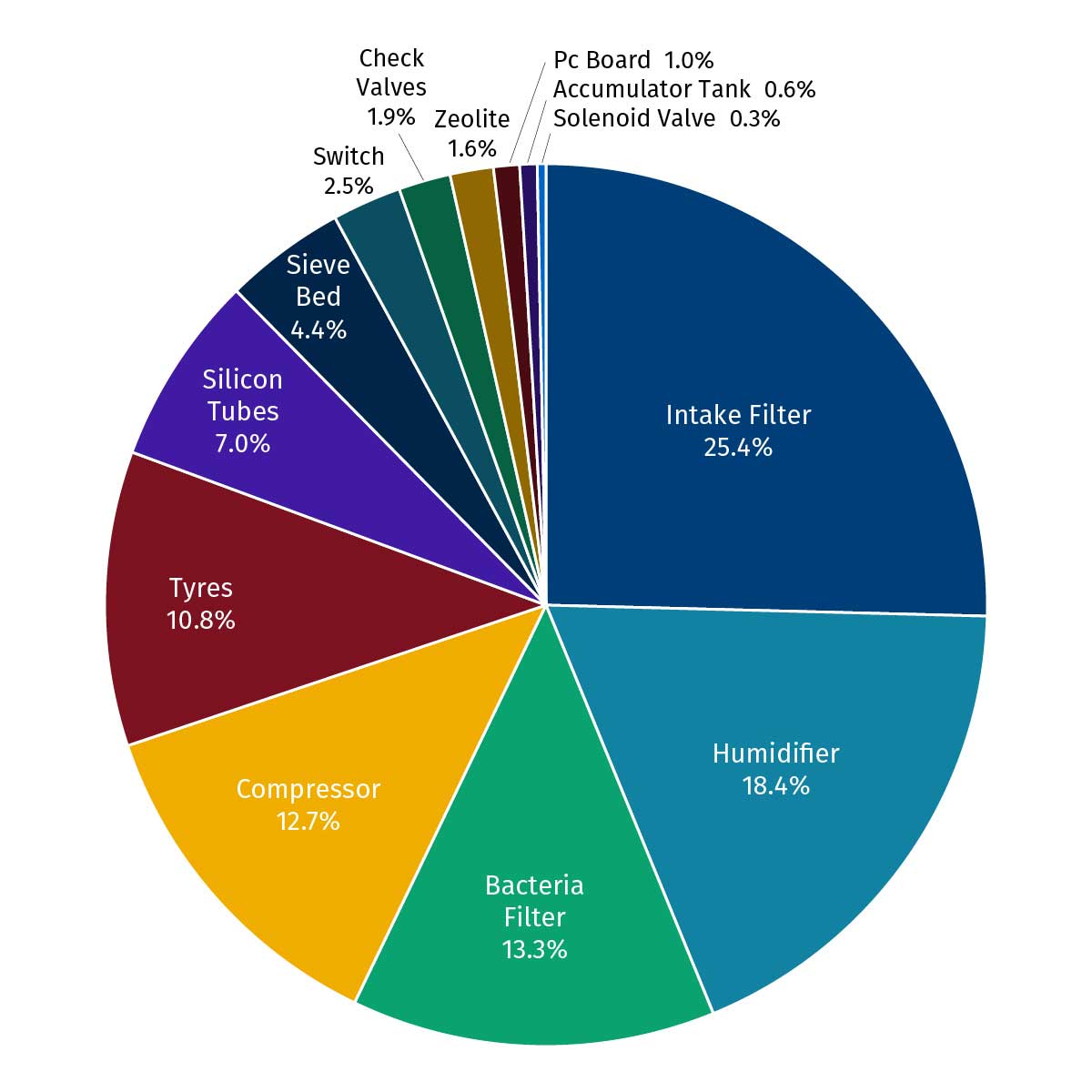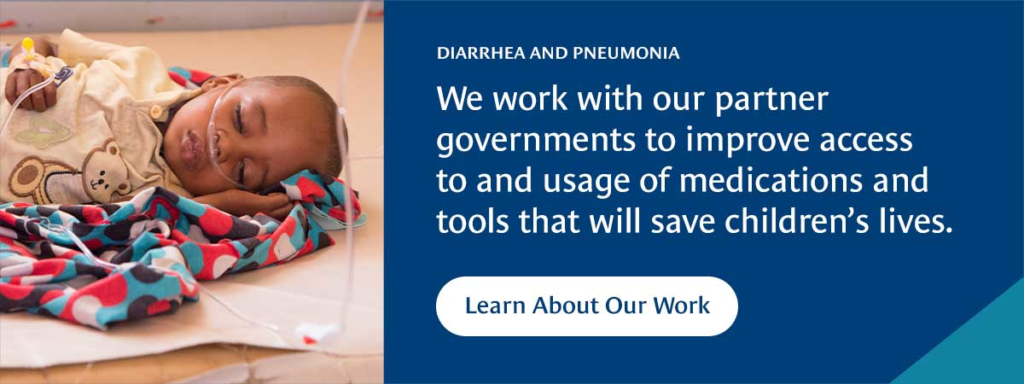In a corner of the emergency pediatric unit a four-year-old boy with pneumonia was using an oxygen concentrator to breathe. He had already been at the hospital in Kano, Nigeria for two days but his breathing had not improved. The hospital technician was called to check on the machine and discovered it was broken—the concentrator had been pumping ambient air.
Stories like this are the reason we began working with the Kano Ministry of Health in 2016 to expand access to oxygen in the state. Despite the availability of life-saving antibiotics, pneumonia is a leading cause of death for children under five in Nigeria because they cannot access oxygen to sustain them while they wait for the antibiotics to take effect.
CHAI staff spent time with our Ministry colleagues listening to the clinicians who treat patients in public health facilities to understand what prevents children with pneumonia from receiving the care they need. We learned that biomedical engineers, who are responsible for ongoing maintenance and repairs of oxygen equipment, often felt isolated and had limited opportunities to update their skills. In addition, sourcing spare parts locally was challenging, with the wide brand variation among concentrators in circulation making it difficult to stockpile commonly needed parts.
Over the next two years, we worked to close this gap in both Kano and across the country.
We helped the federal government develop and scale-up its first national medical oxygen plan. The strategy strongly features repair and maintenance of oxygen equipment. Together with Engineering World Health, we co-designed and trained engineers and established a national community of practice for more than 70 engineers to help each other troubleshoot technical issues.
Kano’s focus on oxygen access prepared the state for early COVID-19 response
In the years since, the Kano government has shown tremendous political will to continue making oxygen access more equitable across the state. Training and mentoring for biomedical engineers have become routine, and part of the state’s annual operational plans. In addition, quality diagnostics and oxygen therapy equipment were acquired and placed in critical inpatient wards.
In 2020, with the global COVID-19 outbreak, these preparations put the state in a strong position to provide oxygen to very sick patients admitted to hospital. The state, and indeed the country, avoided the deadly spikes that overwhelmed healthcare systems in other regions of the world for much of that year.
However, in January 2021, as COVID-19 cases began to rise in Nigeria, the Kano government asked CHAI to conduct a statewide assessment of 40 health facilities to forecast and quantify oxygen need at baseline in the event of a COVID-19 surge.
We identified a significant gap in the availability of oxygen cylinders, which are used bedside to treat hypoxemic patients and need refilling at an oxygen plant. This shortage threatened to create significant supply chain bottlenecks if cases surged—both for COVID and non-COVID patients. Kano’s Hospital Management Board (HMB) immediately began working to ensure existing concentrators (which continually filter and concentrate oxygen from ambient air) were functioning at their maximum production capacities to bridge this gap as efforts ramped up to procure more cylinders. The HMB was able to move quickly on this plan because the board had an existing pool of funds for repair and maintenance of medical equipment, thanks to the state’s prioritization of oxygen access.
Introducing regular repair drives to maintain oxygen supply
The Ministry, with CHAI’s support, also introduced an oxygen desk—a coordinating platform made up of key decision makers, such as the HMB, the State Primary Health Care Management Board, financing agencies, specialized care facilities, and development partners. The desk has continued the work that we started with our original assessment, organizing state and partner oxygen access efforts, pooling resources, and identifying continuing gaps in the system.
The HMB, supported by oxygen desk, has begun an annual oxygen repair drive, where trained biomedical engineers visit health facilities, assess broken oxygen equipment, including pulse oximeters, oxygen concentrators, cylinders, and anesthetic machines. The engineers conduct preventive maintenance on functioning equipment too. The drive culminates in an Oxygen Week where all defunct equipment is fixed within seven days. If spare parts aren’t available, the engineers make note and order the needed pieces.
The most recent repair drive reached 37 health facilities and identified 114 pieces of broken equipment, including pulse oximeters, anesthetic machines, and 94 concentrators. During the following Oxygen Week this past September, biomedical engineers identified eight concentrators which were irreparable. For the rest, the most common spare parts needed were filters, humidifiers, compressors, and sieve beds. Parts are now being sourced and 10 concentrators have already been repaired, making 504,000 extra liters of oxygen available weekly—enough to support 35 children with oxygen.

Most common spare parts needing replacement during September 2021 Oxygen Week.
Recognizing the value of a strong biomedical engineer community, the Kano Ministry of Health and HMB have spent years building the capacity of these professionals, including, crucially, earmarking funds for training and equipment repair to ensure equipment remains functional. This investment helped ensure that children with pneumonia and other conditions that required oxygen still had access to lifesaving therapy.
CHAI, alongside other partners, will continue to support the Ministry to build in efficiencies in the repair drive process and strengthen existing inventory management systems so that never again will a child be gasping for breath because of broken oxygen equipment.






